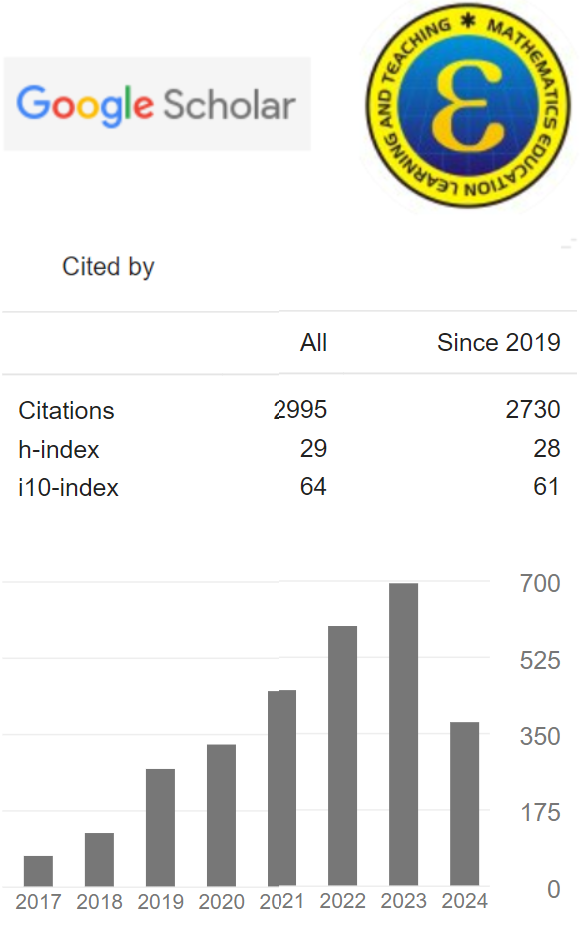Development of 2013 Curriculum Learning Model based on Trigger Powerpoint Media to Improves Students’ Creative Thinking Skill
(1) Universitas Indraprasta PGRI, Jakarta
(2) Universitas Indraprasta PGRI, Jakarta
(3) Universitas Indraprasta PGRI, Jakarta
(4) Universitas Indraprasta PGRI, Jakarta
(5) Universitas Indraprasta PGRI, Jakarta
(*) Corresponding Author
Abstract
Keywords
Full Text:
PDFReferences
Awaludin, A. A. R., Kurniawan, I., & Hartuti, P. M. (2018). Junior High School Student’s Reflective Thinking Process In Problem Solving Viewed From Learning Creativity,â€. Jurnal Pendidikan Indonesia (JPI), 6(2), 154-162.
Babbitt, B. C., & Miller, S. P. (1996). Using hypermedia to improve the mathematics problem-solving skills of students with learning disabilities. Journal of Learning Disabilities, 29(4), 391-401.
Baiduri, B. (2014). A Relational Thinking Process of Elementery School Students with High Capability. Journal of Educational and Developmental Psychology, 4(2), 24-34.
Bey, A. (2014). Developing skills resolution mathematical primary school students. International Journal of Education and Research, 2(10), 601-614.
Craig, R. J., & Amernic, J. H. (2006). PowerPoint presentation technology and the dynamics of teaching. Innovative Higher Education, 31(3), 147-160.
Gambari, A. I., Yusuf, H. T., & Balogun, S. A. (1930). Effectiveness of powerpoint presentation on students’ cognitive achievement in technical drawing. Malaysian Online Journal of Educational Technology, 3(4), 1-12.
Liliasari, M., Supriyanti, S., & Hana, M. N. (2016). Students’creative Thinking Enhancement by Using Interactive Multimedia of Redox Reaction. Jurnal Pengajaran MIPA, 21(1), 30-34.
Lince, R. (2016). Creative thinking ability to increase student mathematical of junior high school by applying models numbered heads together. Journal of Education and Practice, 7(6), 206-212.
Lubart, T. (2005). How can computers be partners in the creative process: classification and commentary on the special issue. International Journal of Human-Computer Studies, 63(4-5), 365-369.
Maharani, H. R. (2014). Creative thinking in mathematics: Are we able to solve mathematical problems in a variety of way. In International Conference on Mathematics, Science, and Education (pp. 120-125).
Mokaram, A. A. K., Al-Shabatat, A. M., Fong, F. S., & Abdallah, A. A. (2011). Enhancing Creative Thinking through Designing Electronic Slides. International Education Studies, 4(1), 39-43.
Nieveen, N. (1999). Prototyping to reach product quality. In Design approaches and tools in education and training (pp. 125-135). Springer, Dordrecht.
Sutama, S. Narimo, & Samino. (2015). Management of Curriculum 2013 Mathematic Learning Evaluation In Junior High School. Int. J. Educ., 7(3),164–174
Wheeler, S., Waite, S. J., & Bromfield, C. (2002). Promoting creative thinking through the use of ICT. Journal of Computer Assisted Learning, 18(3), 367-378
DOI: 10.24235/eduma.v8i2.5016
Article Metrics
Abstract view : 134 timesPDF - 50 times
Refbacks
- There are currently no refbacks.
Copyright (c) 2022 Eduma : Mathematics Education Learning and Teaching


.png)










